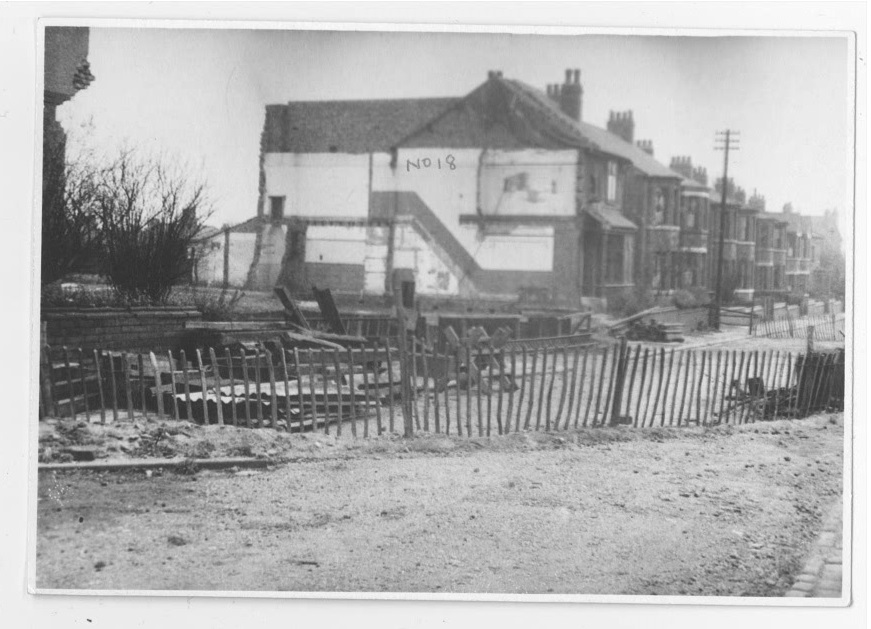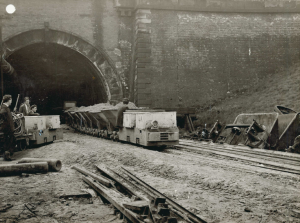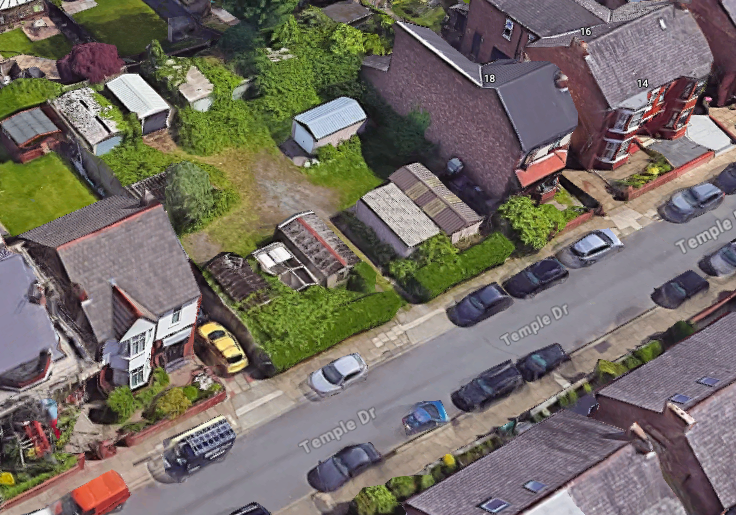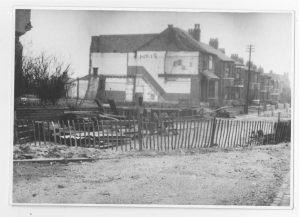
70 years after the Clifton Hall Tunnel collapse, the Swinton tunnel is set to be filled in after National Highway announcement.
The 28th April in 1953 was apparently a completely normal day on Temple Drive in Swinton when tragedy struck. Clifton Hall Tunnel, otherwise known as Black Harry Tunnel, which ran underneath the houses on the Salford street, collapsed.
Witness accounts described a loud cracking noise underground at 5:35am. Five were killed and four houses were destroyed; numbers 22 and 24 collapsed immediately when a gaping hole opened up beneath the suburban street, others were later pulled down having been deemed unsafe.

Constructed in the 1846, the Clifton Hall Tunnel formed part of the Patricroft to Molyneux Junction line and ran under Swinton. The double-track tunnel measured 1187m long and the south west of tunnel’s now-buried portal is now marked by the Clifton Hall tunnel memorial.
A report compiled in 1954 concluded that timber placed in the tunnel as a temporary measure during construction had gradually degraded due to damp conditions, meaning it was unable to bear the weight of 200 tonnes of wet sand above.

Further investigations revealed a letter that indicated required work to strengthen the tunnel was repeatedly put off for fear of closing down the tunnel while in use.
The report, by Brigadier Charles Ardagh Langley on behalf of the Minister of Transport, indicated that the tunnel was not beyond repair, however the decision was taken to close the tunnel permanently. Numbers 20 and 26 Temple Drive were subsequently demolished as the safety of residents could not be guaranteed. In 1959 the tunnel was partially filled and closed permanently.
The houses that were initially destroyed were than rebuilt during the 1980s.

Nearly 180 years after its construction and over 70 since its fateful collapse, National Highways are currently in talks with Salford City Council to seal up Clifton Hall Tunnel.
Hélène Rossiter, Head of Historical Railways Estate at National Highways said: “Safety is our top priority and we are looking to complete the infill in the tunnel where voids remain.
“Following a full discussion by our Stakeholder Advisory Forum, the Secretary of State for Transport has approved our recommendation to seek planning permission to complete the infilling of the tunnel.”
National Highways added that the tunnel’s construction was difficult from the beginning as the ground was very unstable where mining had already taken place.
National Highways will submit an application to Salford City Council in due course.
More info here
• Heritage images courtesy of National Highways; all other images via Google Maps / Streetview















One Comment